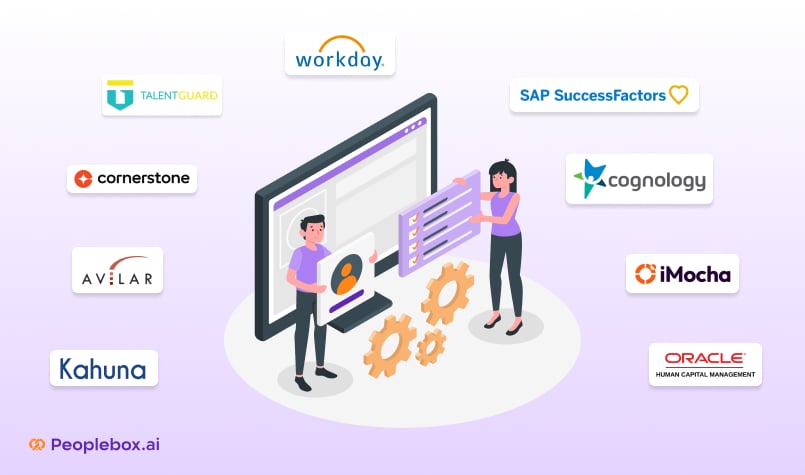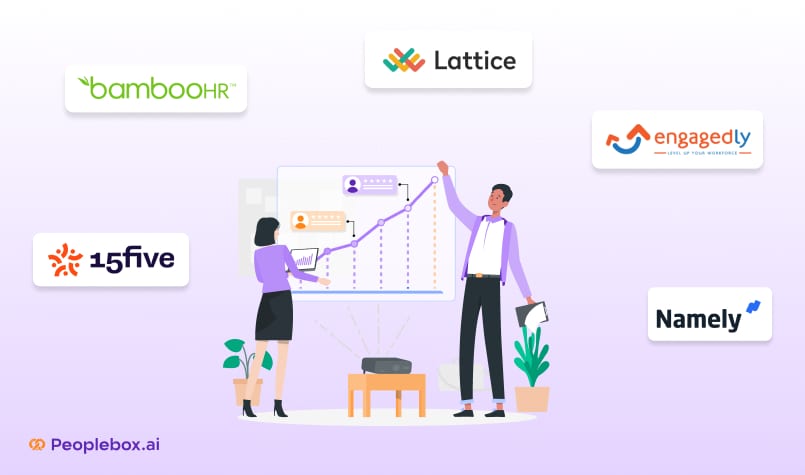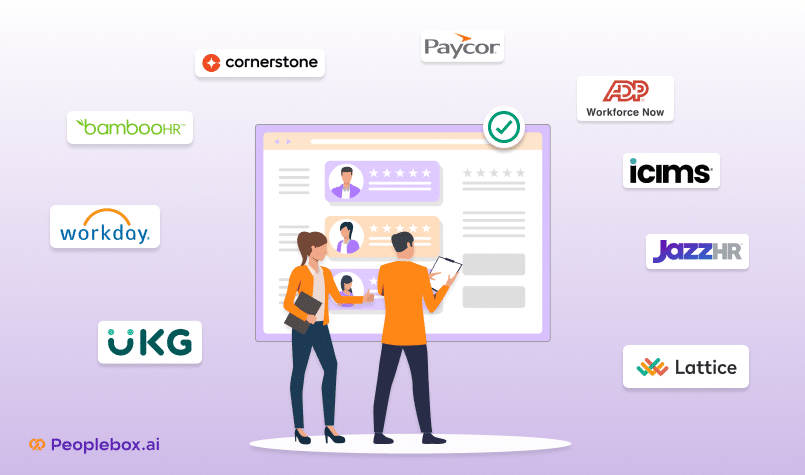In today’s rapidly evolving workforce, the traditional notion of employment is continuously being redefined. Among the various employment classifications, one that often stands out yet remains frequently misunderstood is the 1099 employee.
Named after the IRS form used to report their earnings, 1099 employees, also known as independent contractors, play a pivotal role in the gig economy and various industries.
A 1099 employee is not a regular, full-time worker but a freelancer or contractor hired to complete specific tasks or projects.
Unlike W-2 employees, who are on an employer’s payroll and receive benefits such as health insurance, 401(k) contributions, and paid leave, 1099 employees enjoy a greater degree of flexibility and autonomy.
They are typically responsible for managing their own taxes, securing their benefits, and shouldering the risks and rewards of their entrepreneurial endeavors.
Consider the case of Jane, a graphic designer who works on various projects for multiple clients.
Instead of being employed by a single company, Jane operates as a 1099 employee. She sets her rates, decides her work hours, and chooses which projects to take on.
This arrangement offers her the freedom to balance her work and personal life according to her preferences. However, it also means she must handle her tax filings and lacks the job security and benefits that come with a traditional employment relationship.
In this comprehensive guide, we will delve into the intricacies of what it means to be a 1099 employee. We’ll explore the legal definitions, tax implications, and benefits and challenges associated with this type of work.
Through real-life examples and practical insights, we aim to demystify the 1099 status, helping both employers and workers navigate this increasingly prevalent aspect of the modern labour market.
Whether you’re an independent contractor yourself or an employer considering hiring one, understanding the nuances of 1099 employment is essential in today’s dynamic economic landscape.
Benefits and Challenges of Being a 1099 Employee
Being a 1099 employee, or independent contractor, comes with a unique set of benefits and challenges. Understanding these can help individuals like Jane, our graphic designer, make informed decisions about their work life and financial management.
Benefits
1. Flexibility and Autonomy
- Control Over Work Schedule: As a 1099 employee, Jane has the freedom to set her own work hours. She can choose to work early in the morning, late at night, or any time that suits her lifestyle and personal commitments.
- Choice of Projects: Jane can select projects that align with her interests and skills. This ability to choose her work allows her to focus on areas she is passionate about, increasing job satisfaction and motivation.
- Work-Life Balance: With greater control over her schedule, Jane can balance her professional and personal life more effectively. This can lead to reduced stress and increased overall well-being.
2. Potential for Higher Earnings
- Setting Rates: Jane can set her own rates based on her skills, experience, and the complexity of the project. This potential for higher income can be a significant advantage over salaried positions.
- Multiple Income Streams: By working with various clients, Jane can diversify her income sources. This diversification can provide financial stability and growth opportunities, especially if she builds a strong client base.
3. Variety of Work Opportunities
- Exposure to Different Industries: Working as an independent contractor allows Jane to engage with clients from different industries, broadening her experience and expertise.
- Skill Development: The diverse range of projects can help Jane continuously develop and refine her skills. This ongoing professional growth can enhance her portfolio and make her more attractive to future clients.
Challenges
1. Lack of Job Security and Benefits
- No Guaranteed Income: Unlike a salaried position, Jane does not have a guaranteed paycheck. Her income depends on the availability of projects and timely payments from clients.
- Absence of Employer-Sponsored Benefits: Jane does not receive traditional benefits like health insurance, retirement plans, or paid leave. She must independently secure these benefits, which can be costly and complex to manage.
2. Managing Taxes and Finances
- Self-Employment Taxes: As a 1099 employee, Jane is responsible for paying self-employment taxes, including Social Security and Medicare. This requires careful financial planning and regular tax payments.
- Quarterly Estimated Taxes: Jane must make quarterly estimated tax payments to the IRS, which can be challenging to estimate accurately. Failure to pay enough taxes throughout the year can result in penalties.
- Expense Tracking: Jane needs to meticulously track her business expenses to maximize deductions and reduce her taxable income. This requires diligent record-keeping and financial management skills.
3. Navigating Inconsistent Income
- Income Fluctuations: Jane’s income can vary significantly from month to month based on project availability and client payments. Managing cash flow and budgeting for lean periods can be challenging.
- Client Payments: Delayed or non-payment from clients can impact Jane’s financial stability. She must establish clear payment terms and follow up on overdue invoices to ensure timely payments.
Full-Time Employee vs. Independent Contractor
The primary distinction between full-time employees and independent contractors lies in their working relationship with the employer.
Full-time employees are bound to the company, receiving consistent wages and benefits, and typically have their work schedule and responsibilities dictated by the employer.
They are subject to the company’s policies and regulations.
Independent contractors, on the other hand, have more control over their work. They often set their own hours, decide how to complete tasks, and may work for multiple clients simultaneously.
The business hiring an independent contractor is more focused on the outcome rather than the process of how the work is performed.
Most Common Types of 1099 Employees (Independent Contractors)
Independent contractors span a wide range of professions and industries.
Some of the most common types include:
- Freelancers: Writers, graphic designers, and marketers who offer their skills on a project-by-project basis.
- Consultants: Experts in fields like business management, IT, and finance who provide advice and strategies.
- Gig Workers: Individuals who take up short-term tasks through platforms like Uber, Lyft, or TaskRabbit.
- Contract Workers: Professionals such as software developers, engineers, and project managers hired for specific projects.
Why Hire a 1099 Employee?
Hiring 1099 employees can offer several advantages:
- Cost Savings: Businesses do not need to provide benefits such as health insurance, retirement plans, or paid leave.
- Flexibility: Companies can hire experts for specific projects without committing to long-term employment.
- Scalability: Businesses can quickly scale their workforce up or down based on project needs.
- Specialized Skills: Access to professionals with specialized skills and expertise for specific tasks or projects.
Employee Classification Issues
Misclassifying employees as independent contractors can lead to significant legal and financial consequences.
The IRS has specific guidelines to determine if a worker is an employee or an independent contractor, considering factors like behavioral control, financial control, and the nature of the relationship.
Misclassification can result in penalties, back taxes, and legal disputes. It is crucial for businesses to correctly classify their workers to avoid these issues.
Paperwork for 1099 Employees
Independent contractors must complete and submit several key documents, including:
- W-9 Form: This form provides the employer with the contractor’s taxpayer identification number.
- Independent Contractor Agreement: A contract outlining the scope of work, payment terms, and other essential details.
- Invoices: Contractors typically submit invoices to request payment for their services.
How Do 1099 Employees Get Paid?
1099 employees are usually paid based on the terms outlined in their contract.
Payments can be made upon completion of specific tasks, or milestones, or on a regular schedule (e.g., weekly or monthly).
Unlike traditional employees, contractors do not receive regular paychecks; instead, they invoice their clients for the work completed and are paid directly.
Tax Implications for 1099 Employees
Navigating the tax landscape as a 1099 employee can be complex, but understanding the basics can help independent contractors like Jane, our graphic designer, stay compliant and make the most of their tax situation. Here’s a detailed look at the key tax implications for 1099 employees.
Self-Employment Taxes
As a 1099 employee, Jane is considered self-employed, meaning she must handle her taxes differently than a W-2 employee. One significant difference is the responsibility for self-employment taxes, which cover Social Security and Medicare.
- Self-Employment Tax Rate: The self-employment tax rate is 15.3%, which includes 12.4% for Social Security and 2.9% for Medicare.
- Calculating Self-Employment Taxes: Jane needs to calculate her net earnings from self-employment to determine her tax liability. Net earnings are calculated by subtracting business expenses from total income.
- Paying Self-Employment Taxes: These taxes are paid through the IRS Form 1040, Schedule SE. Jane must ensure she accurately reports her income and expenses to avoid underpayment penalties.
Quarterly Estimated Taxes
Unlike W-2 employees, 1099 employees do not have taxes withheld from their paychecks. Instead, they must make quarterly estimated tax payments to the IRS. This is crucial to avoid penalties and interest.
- When to Pay: Estimated tax payments are due four times a year, typically in April, June, September, and January of the following year.
- How to Calculate: Jane needs to estimate her annual income, subtract her business expenses, and calculate her estimated tax liability. The IRS provides Form 1040-ES to help with these calculations.
- Payment Methods: Payments can be made online via the IRS website, by mail, or through electronic funds transfer.
Deductions and Write-offs
One advantage of being a 1099 employee is the ability to deduct business expenses from income, reducing taxable income. Jane can take advantage of various deductions to lower her tax burden.
- Home Office Deduction: If Jane uses a part of her home exclusively for business, she can deduct expenses related to that space, such as rent, utilities, and maintenance. The simplified method allows a deduction of $5 per square foot, up to 300 square feet.
- Business Expenses: Jane can deduct costs directly related to her work, such as software subscriptions, office supplies, and advertising expenses.
- Travel and Meals: If Jane travels for work, she can deduct travel expenses, including airfare, lodging, and meals. Meals are typically deductible at 50%.
- Health Insurance: Jane can deduct health insurance premiums if she is not eligible for an employer-sponsored plan through a spouse.
- Retirement Contributions: Contributions to a self-employed retirement plan, such as a SEP IRA or Solo 401(k), are deductible and can help Jane save for retirement while reducing her taxable income.
Example: Jane’s Tax Scenario
Let’s consider Jane’s tax situation to illustrate these points. Suppose Jane earned $80,000 in a year from various graphic design projects. She incurred $20,000 in business expenses, including software, a new computer, and marketing costs. Her net earnings would be $60,000 ($80,000 – $20,000).
- Self-Employment Tax: Jane’s self-employment tax would be 15.3% of $60,000, which equals $9,180.
- Quarterly Payments: Based on her estimated tax liability, Jane would divide her total expected taxes by four and make quarterly payments of approximately $2,295.
- Deductions: Jane can also deduct her home office expenses. If her home office qualifies for a $1,500 deduction, her taxable income would further reduce, lowering her overall tax liability.
Understanding and managing these tax responsibilities can help 1099 employees like Jane ensure they comply with tax laws and optimize their financial situation. By keeping accurate records, making timely payments, and leveraging available deductions, Jane can effectively manage her taxes and focus on growing her business.
Hiring 1099 Employees: Employer Perspective
Employing 1099 employees, or independent contractors, offers numerous advantages for businesses, but it also comes with specific legal responsibilities and best practices. Employers must navigate these aspects carefully to ensure compliance and maximize the benefits of working with independent contractors.
Advantages for Employers
Hiring 1099 employees can be highly advantageous for businesses. Here are some of the key benefits:
- Cost Savings: Employers can save on costs associated with full-time employees, such as payroll taxes, benefits, and other overhead expenses. Since 1099 employees manage their own taxes and benefits, businesses can allocate those resources elsewhere.
- Flexibility in Workforce Management: Independent contractors provide the flexibility to scale the workforce up or down based on project needs. This is particularly beneficial for businesses with fluctuating workloads or those requiring specialized skills for short-term projects.
- Access to Specialized Skills: Hiring 1099 employees allows businesses to access a wide range of expertise and skills that may not be available within the current workforce. This can lead to higher quality work and innovation.
Legal Responsibilities and Compliance
Ensuring proper classification and compliance with labor laws is critical when working with 1099 employees. Misclassification can lead to legal and financial consequences. Here are key considerations:
- Proper Classification: The IRS and other regulatory bodies have specific criteria to determine whether a worker is an independent contractor or an employee. Factors include the degree of control the employer has over the worker, the worker’s opportunity for profit or loss, and the permanency of the relationship.
- Written Contracts: Clear, written contracts are essential. They should outline the scope of work, payment terms, deadlines, and any other relevant details. This helps to establish the independent nature of the contractor and protects both parties.
- Labor Laws and Regulations: Employers must adhere to federal, state, and local labor laws. This includes understanding and complying with wage and hour laws, anti-discrimination regulations, and any industry-specific requirements.
- Reporting and Record Keeping: Employers must report payments to 1099 employees to the IRS using Form 1099-NEC. Keeping detailed records of payments and contracts is crucial for compliance and for resolving any potential disputes.
Best Practices for Working with 1099 Employees
Building effective working relationships with 1099 employees involves clear communication and setting expectations. Here are some best practices:
- Clear Communication: Establish open and clear lines of communication. Define the preferred communication channels, frequency of updates, and key points of contact. This ensures that both parties are aligned and can address any issues promptly.
- Setting Expectations: Clearly outline project goals, deadlines, and deliverables. Providing detailed briefs and documentation helps independent contractors understand what is expected and how to deliver high-quality work.
- Feedback and Support: Provide constructive feedback and support throughout the project. This can help contractors improve their work and stay motivated, ultimately benefiting the business.
- Respect Independence: Respect the autonomy of 1099 employees. Avoid micromanaging and allow them to complete their work in the manner they see fit, as long as it meets the agreed-upon standards and deadlines.
Conclusion
Understanding the nuances of a 1099 employee is crucial for both businesses and workers.
Independent contractors provide flexibility, cost savings, and access to specialized skills, but they also come with specific tax obligations and legal considerations.
Proper classification, clear contracts, and understanding of the tax implications can help maintain a successful and compliant working relationship.







